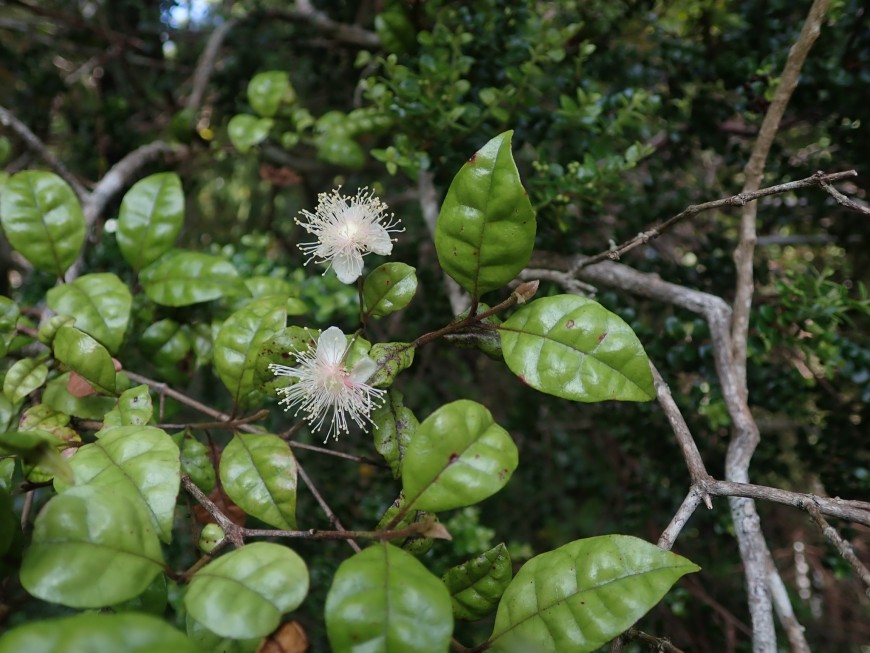New paper: Ramarama trees support diverse fungal communities
Over 90% of plant species have mutually beneficial relationships with mycorrhizal fungi. In these relationships, the fungus colonizes the root tissue of the host plant. It then provides host plants with services such as improved access to nutrients, water absorption, and disease resistance. In return, the plant host is necessary for the fungus’s growth and reproduction.
For his Master’s, Marley Ford sought to understand more about mycorrhizal fungi and the fungal community in general that is associated with Lophomyrtus bullata (ramarama), a common tree in New Zealand’s forests that is threatened by myrtle rust. Because it is such a common plant, little emphasis has been placed on studying this species or its role and context in the greater ecosystem—Marley’s study was the first to demonstrate the multiple fungal species associated with ramarama.
This research has just been published in the New Zealand Journal of Ecology. The study confirms that ramarama associates with arbuscular mycorrhizal fungi.

Ramarama (Lophomyrtus bullata) in flower. December 31 2020 (M. Ford).
Using molecular analyses of root samples from three different forest types, Marley identified arbuscular mycorrhizae from nine families with Archaeosporaceae being particularly well represented, both in terms of abundance and diversity, and many other fungi such as Ascomycota, Basidiomycota, and Zygomycota. The differences in abundance and richness between fungal families and across the three forest types studied are explained in more detail in the paper.
Root staining provided additional evidence of arbuscular mycorrhizae colonisation. Under the microscope, arbuscular mycorrhizal structures such as hyphal coils, arbuscules, and vesicles were visible. It should be noted that during molecular analysis, one ectomycorrhizal species, Scleroderma xanthochroum, was found in one of the samples, but this is known to associate of Kunzea robusta, which formed the canopy where this sample was recovered.
This study is one of several within the Beyond Myrtle Rust programme, not to mention across New Zealand, that is working to improve our understanding of the wider ecological community that stands to be impacted by myrtle rust. Studies like these are essential for understanding the context in which our native plants live. Also, given that fungal microbiomes provide services to their hosts, there is hope that further investigations of the microbiomes of our most vulnerable species will provide clues for helping these plants boost their immunity to diseases such as myrtle rust.
The research was funded by Beyond Myrtle Rust and completed in collaboration with MWLR, Unitec, and University of Auckland.